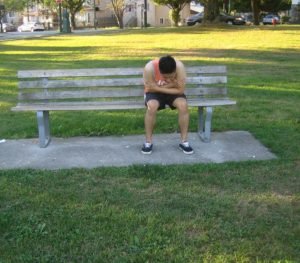Periostitis involves inflammation of the periosteum. This condition typically affects those who play soccer, football and runners. The periosteum is the dense connective tissue that protects and secures the muscle fibers to the bone tissue.
https://www.youtube.com/watch?v=P7dDuJe_nU4
In most cases, periostitis develops if there is an injury, cancerous growth, severe infection or any autoimmune condition that impairs a layer of periosteum.
What are the indications of periostitis?
An individual with periostitis usually have the following symptoms:
- Pain in the front part of the tibia
- Pain over the exterior region of the tibia in rare cases
- Tenderness of the bone
- Stiffness
Increased pain and stiffness upon moving out of the bed in the morning and standing up from a seated position after a long period. - Increased pain and stiffness upon moving out of the bed in the morning and standing up from a seated position after a long period
- Even though prolonged exercise can worsen the symptoms, the pain tends to settle with moderate range of physical activity
What are the causes?
- Overuse of the periosteum in the lower leg region especially among athletes
- External trauma to the tibia
- Incorrect running techniques
- Leukemia
- Complications in some chronic conditions such as syphilis
Management
In most cases, the treatment for periostitis includes 2 phases – healing and rehabilitation. During the healing phase, the treatment is aimed on allowing the symptoms to settle while the rehabilitation phase involves building up the area to reduce the risk for further recurrence.
Healing phase
- Rest – take a break from any activities such as running, walking or jumping. Non-weight bearing activities including swimming can be included during this period
- Stretching – mild stretching of the muscles at the front part of the lower leg is vital
- Application of ice – apply an ice pack on the affected area 10-15 minutes
- Deep tissue massage
- Anti-inflammatory medications – a short course of these medications is beneficial in reducing the pain
- Leg elevation – the affected leg should be raised above the heart to reduce the blood flow and minimize the inflammatory process.
Rehabilitation phase
Once the symptoms have settled, the rehabilitation phase is designed in a way so that the individual can gradually resume the desired level of activity.
- Heat treatment – apply a warm compress on the tibia before workout
- Stretching – stretching the lower leg muscles to control the symptoms
- Taping
- Shoe inserts or shock-absorbing shoes – these can help minimize the load on the shin while running, jumping or walking
- Arch supports – these supports are suitable for individuals with flat feet
- Stockings that provide support to the calf
- Gradual return to activity

